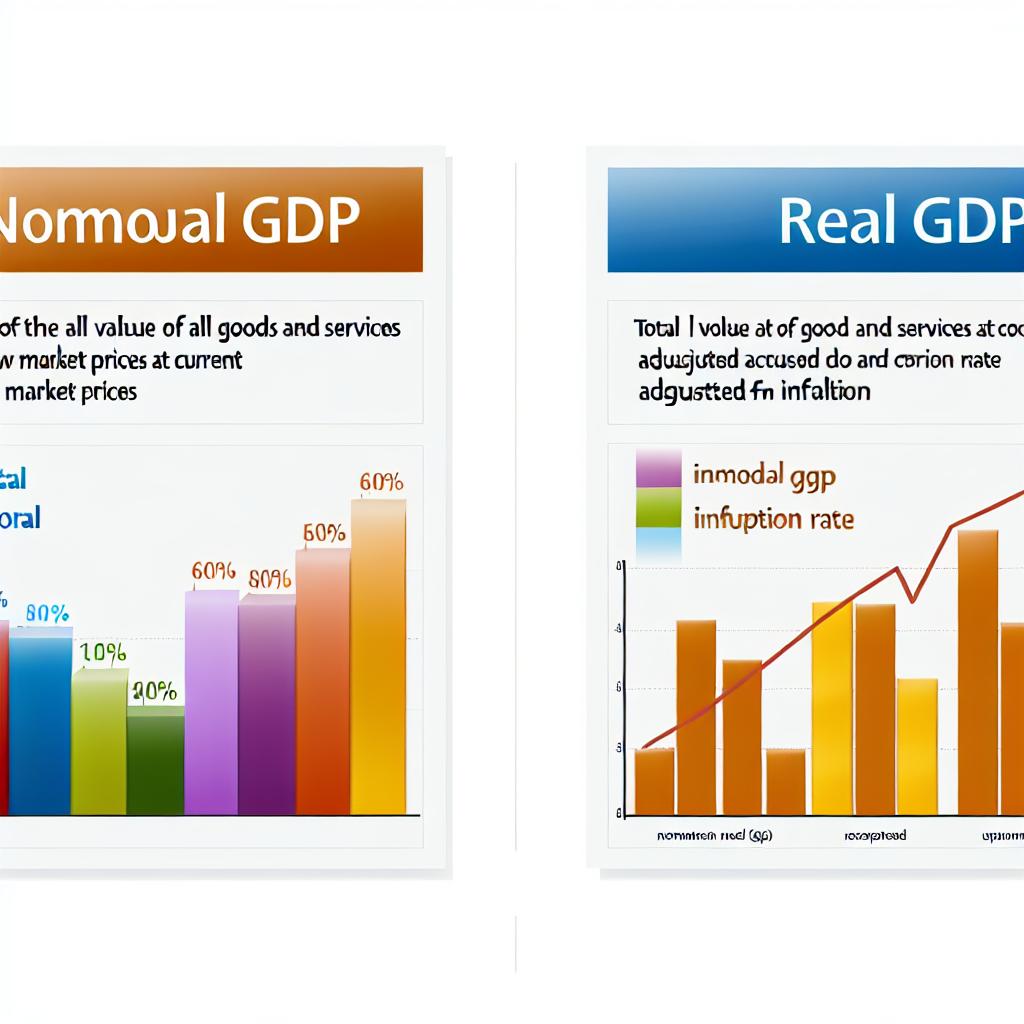The Difference Between Nominal and Real GDP
- Written by: admin
- Category: Uncategorized
- Published: July 20, 2025

Understanding Nominal GDP
Nominal Gross Domestic Product (GDP) is a fundamental economic indicator that measures a country’s overall economic output in monetary terms using the prevailing market prices of goods and services. This measure does not account for inflation, which means it presents a picture of economic activity based on current price levels. It’s typically calculated over specific periods, such as annually or quarterly, to provide insights into the economic conditions and growth trends of a nation.
Characteristics of Nominal GDP
Nominal GDP has distinct characteristics that make it an essential tool for economists and policy-makers.
Current Prices: This feature indicates that nominal GDP reflects the market value of goods and services using the prices that are current in the year this economic measure is evaluated. Hence, nominal GDP gives the monetary value of economic production without filtering out the impacts of inflation or deflation, which can sometimes skew the perception of actual economic activity.
Economic Indicator: Despite its limitations, nominal GDP offers significant insights into the immediate economic health of a country. It provides a snapshot of the economy’s output, presenting an understanding of the country’s economic activity in terms of money. Observing changes in nominal GDP can help economists identify growth trends and cycles of recessions or expansions.
Inflation Impact: A major limitation of nominal GDP is its susceptibility to inflationary distortions. When there is an increase in the general price level within an economy, nominal GDP might indicate economic growth, even when the actual output volume has stayed the same or decreased. This often requires supplementary data to make accurate assessments and foster informed economic decisions.
To gain comprehensive insights into how GDP is measured, consulting resources from renowned economic institutions, such as The World Bank, could be beneficial.
Understanding Real GDP
Real GDP serves as a crucial tool for assessing the true growth and size of an economy by adjusting nominal GDP figures for the effects of inflation. These adjustments offer a clearer and more consistent representation of economic performance over time, allowing for more accurate comparisons across different periods.
Characteristics of Real GDP
Real GDP also has unique characteristics that make it an invaluable measure of economic performance:
Constant Prices: Unlike nominal GDP, real GDP uses price levels from a base year to eliminate the impact of inflation. By maintaining constant prices, real GDP provides a means of measuring the volume of production and services, rather than just their monetary value at current prices. This way, it isolates and highlights genuine economic growth without being misled by price changes.
Economic Analysis: The use of real GDP plays a critical role in economic analysis, as it offers a more accurate picture of the economy’s underlying growth. This parameter serves as a reliable benchmark to gauge whether an increase in GDP is truly a sign of increased production or merely the result of inflation.
Adjustments for Inflation: With inflation adjustments included in the calculation of real GDP, it becomes a preferred metric among economists who seek to study changes in economic productivity. These adjustments are vital for analyzing long-term growth patterns and identifying whether policies are effectively fostering real growth in economic output.
For further exploration and a deeper understanding of GDP concepts, educational materials from established economic think tanks like The International Monetary Fund can help broaden one’s knowledge.
The Key Differences
The discrepancies between nominal GDP and real GDP predominantly center on their treatment of price changes. Nominal GDP uses current prices, making it a straightforward raw measure that reflects economic activity in monetary terms. In contrast, real GDP adjusts for price variations, thus providing a more stable and reliable metric that allows meaningful comparisons over time.
Why the Differences Matter
The distinction between nominal and real GDP holds great importance for economic analysis and the formulation of economic policies. Understanding whether changes in GDP are driven by genuine growth in production or inflated by rising prices is crucial for policymakers, investors, and economists.
For example, when a country’s nominal GDP increases, it does not necessarily point unequivocally to economic growth. It could either be a result of increased production or merely a reflection of inflation. By examining real GDP alongside nominal GDP, analysts and policymakers can discern the underlying factors influencing growth dynamics. This differentiation aids in the construction of accurate economic models and forecasts, facilitating more effective strategies and interventions.
Reliable decisions in policy-making often hinge on the insights garnered from these GDP comparisons, emphasizing how pivotal it is to analyze both measures in tandem.
For additional detailed insights, consulting sources like The Bank for International Settlements for reports and analytical papers would further enhance your understanding of GDP analysis and its broader implications.
This article was last updated on: July 20, 2025

